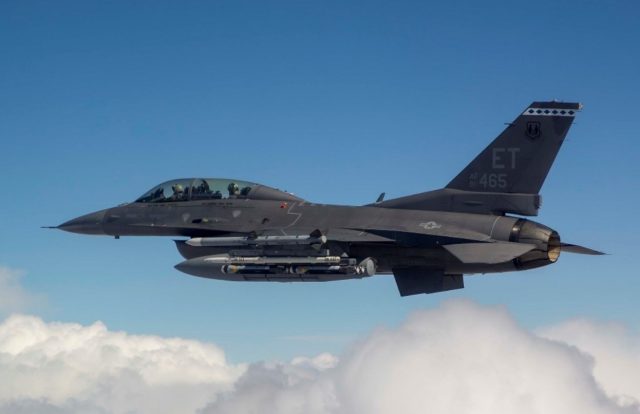
The US Air Force’s Golden Horde Vanguard program says it has completed the three objectives of the final flight test of its modified collaborative small diameter bomb I (CSDB) at White Sands Missile Range.
The CDSB effort is aimed at developing bombs equipped with autonomy payloads that enable them to communicate with each other to improve their probability of hitting the intended target.
During the latest flight test on May 25, two F-16s from the 96th Test Wing Eglin Air Force Base simultaneously released their weapons, with four released from one aircraft and two weapons released from the other.
As in previous missions, the weapons established communications with each other.
The first objective expands the radio network from the previous two and four weapons in flight to six weapons in flight, as well as a ground station. This demonstrates the ability of the L3Harris Banshee 2 radio network to scale up the number of nodes required to accomplish the mission.
The second objective sends an in-flight target update from a ground station to the flight weapons to engage a new high priority target. An IFTU message is sent from outside the weapon swarm, and directs the swarm to act on it. This demonstrates the ability of Golden Horde weapons to interface with the larger Joint All-Domain Command and Control network.
“The JADC2 linkage is a key capability for future NCA weapons, and one the team was particularly focused on implementing,” stated Norma Taylor, the CSDB program manager.
The final new objective was to have two weapons perform a synchronized time on target (STOT) attack on a single target location. Two other weapons were synchronized on two targets, which was also demonstrated on the second test mission. Georgia Tech Research Institute’s STOT algorithm was able to flexibly support the new target requirement without any software changes.
“The Golden Horde team is blazing an exciting new path for air-delivered weapons,” said Maj. Gen. Heather Pringle, AFRL commander. “These technologies are completely changing the way we think about weapon capabilities, much like the laser-guided bomb did several decades ago. Golden Horde and technologies like this will enable the Department of the Air Force to overcome many of its current and future challenges, and we’re just beginning to unfold all the possibilities.”
“This successful demonstration completes the CSDB effort, and is a great testament to the hard work of the team,” stated Steven Stockbridge, the Golden Horde principal investigator. “Knowledge gained during the past two years of the Golden Horde Vanguard will be transitioned to the next phase of the program.”
In the next phase, called the Colosseum, the AFRL Munitions Directorate is partnering with AFLCMC’s Weapons Program Executive Office and Eglin Air Force Base’s 96th Test Wing. Together they will implement digital engineering, hardware-in-the-loop, and surrogate UAV testing to rapidly integrate, develop, and test transformational NCA weapon technologies for future warfighting opportunities.


























